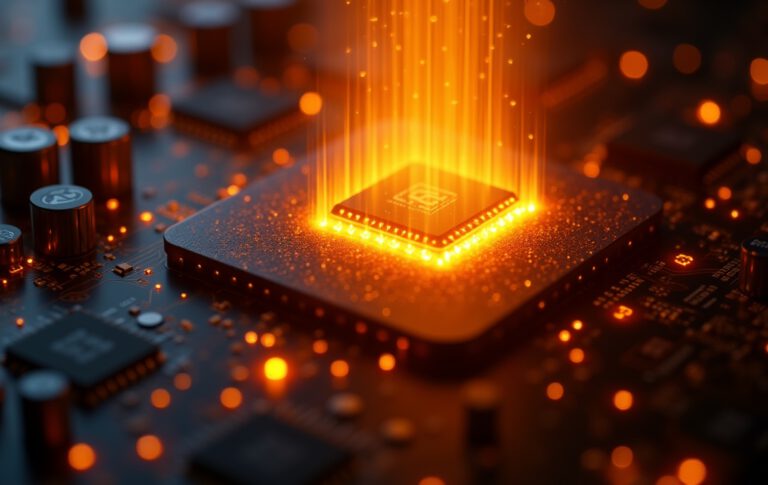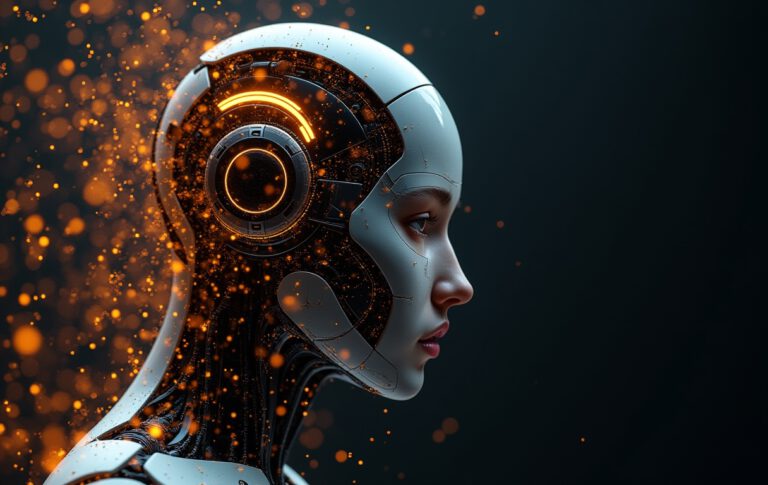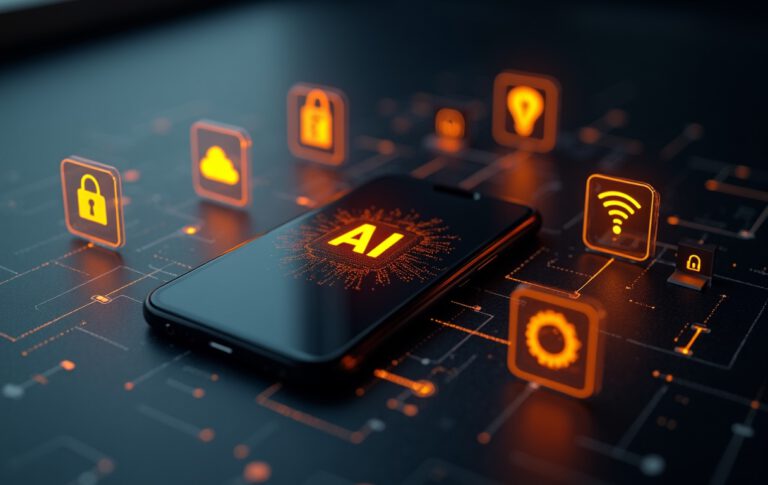🕔: 7 min – Technical: ✔✔✔
Artificial intelligence (AI) has been a central research topic for decades, and with recent technological advances, it has reached the potential to transform various industries and our daily lives. Two concepts often discussed in this field are “Deep Learning” and “Deep Reasoning.” While they may seem similar at first glance, there are fundamental differences between these approaches that define different capabilities and applications of AI. This article explores these two methods, explains how they work, and discusses why Deep Reasoning might be the next big target in AI research.
What is Deep Learning?
The Basics of Deep Learning
Deep Learning is a subcategory of machine learning that relies on artificial neural networks. These networks are inspired by the way the human brain functions, with information flowing through layers of neurons. The “deep” aspect of deep learning refers to the many layers in these networks, allowing them to detect complex patterns and relationships in large datasets.
This method is particularly effective for tasks such as image and speech recognition, text processing, and game strategies. For example, deep neural networks can learn to recognize faces in photos or convert spoken language into text by analyzing millions of examples. Deep learning’s performance has dramatically improved in recent years, partly due to the growing availability of large datasets (big data) and powerful computational resources.
Supervised and Unsupervised Learning
Deep learning is typically applied in two main forms: supervised learning and unsupervised learning.
In supervised learning, neural networks are trained on labeled data. This means that during training, the model already knows what outcome is associated with each data set. An example of this is a network learning to distinguish between dogs and cats: it is fed many images of dogs and cats, each correctly labeled.
Unsupervised learning, on the other hand, deals with unlabeled data. Here, the neural network tries to find patterns in the data without knowing in advance what it is supposed to find. An example would be analyzing customer data to identify clusters of users with similar purchasing behavior.
Strengths and Weaknesses of Deep Learning
Deep Learning has achieved impressive success in areas where large amounts of raw data are available, and the patterns are complex yet ultimately statistically identifiable. However, it is not without challenges. Perhaps the biggest drawback is that deep learning models are considered “black boxes”: they often produce impressive results, but it’s difficult to understand how they arrive at those results. The models are opaque and can make decisions without human observers fully understanding the rationale. Additionally, deep learning models require vast amounts of data and computational resources, limiting their applicability in data-scarce or resource-constrained environments.
What is Deep Reasoning?
The Idea Behind Deep Reasoning
While deep learning focuses on recognizing patterns in data, deep reasoning takes it a step further. Deep reasoning aims to develop AIs that are not only capable of interpreting data but also able to think logically and draw inferences, much like humans. It involves understanding cause and effect and building models that not only recognize patterns but can also explain why certain phenomena occur.
Thus, deep reasoning is not just about passively absorbing information but about actively manipulating that information to gain new insights. It involves methods that use formal logic, symbolic AI, and knowledge representation to perform deductive, inductive, and abductive reasoning.
Symbolic vs. Connectionist AI
To better understand deep reasoning, it’s worth looking at the two dominant paradigms in AI research: symbolic and connectionist AI.
Symbolic AI, which emerged in the 1950s and 60s, is based on the idea that human intelligence can be modeled through rules and logic. This method uses symbolic representations of knowledge, such as logic or mathematical equations, to draw conclusions. An example would be a chess computer that logically thinks through various possible moves before making a decision.
Connectionist AI, which includes deep learning, relies instead on neural networks to learn knowledge through pattern recognition without explicitly using formal rules.
Deep reasoning aims to combine the best of both worlds. It leverages the computational power and pattern recognition abilities of neural networks while integrating the logical capabilities of symbolic AI to create machines that can not only recognize patterns but also make decisions and derive new insights based on those patterns.
Example: Understanding Cause-and-Effect Relationships
One application of deep reasoning could be developing a model that not only identifies the correlation between two variables but also understands their causal relationship. While a deep learning model might detect that people living in a particular region have a higher risk of a certain disease, a deep reasoning model could explain why this is the case—perhaps due to environmental factors or access to healthcare.
This is especially relevant in fields like medicine, where simply recognizing patterns is often not enough. Doctors and researchers want to understand why a particular treatment works or why a disease occurs in specific populations. Deep reasoning could bring about revolutionary advances by helping to understand the underlying mechanisms, not just recognizing symptoms.
Challenges of Deep Reasoning
While the idea of deep reasoning is fascinating, this technology is still in its infancy. Developing systems capable of reasoning about both statistical patterns and logical relationships is extremely complex. One significant challenge is that symbolic AI often relies heavily on human knowledge and manual rule-setting, whereas neural networks derive their strength from autonomous learning from data.
Moreover, integrating symbolic and connectionist approaches presents a technical challenge, as they use entirely different paradigms. While neural networks are adept at processing unstructured data like images and speech, symbolic systems are better suited for structured knowledge such as rules and logical statements. Combining these two approaches requires not only technological innovation but also new ways of thinking about AI and learning.
Differences and Applications: When to Use Deep Learning and When Deep Reasoning?
Applications of Deep Learning
Deep learning is widely used today, especially where large datasets are available. Here are some common application areas:
– Image and Speech Recognition: Deep learning is successfully employed in systems like facial recognition, self-driving cars, and virtual assistants such as Siri and Alexa.
– Automation: Robots and machines that perform repetitive tasks can increasingly improve through deep learning. Examples can be found in manufacturing, logistics, and agriculture.
– Medical Imaging: Deep learning aids in diagnosing diseases by analyzing MRI, CT scans, and other medical images.
Applications of Deep Reasoning
The applications of deep reasoning are still less developed, but in areas where understanding and explanation play a central role, deep reasoning could become indispensable in the future:
– Causality in Medicine: While deep learning can help diagnose diseases, deep reasoning could contribute to a better understanding of the causes of those diseases, helping to develop targeted treatment plans.
– Scientific Research: Deep reasoning could assist in generating hypotheses and solving complex scientific problems by building on existing data and drawing logical conclusions.
– Strategic Decision Making: In fields like financial planning, government work, or corporate strategy, deep reasoning could help make well-informed decisions based on a deep analysis of cause-and-effect relationships.
Conclusion: The Future of AI
Deep Learning and Deep Reasoning are two different but complementary approaches in AI. While deep learning has already brought us enormous progress in pattern recognition and data processing, deep reasoning could be the next big goal for developing truly intelligent systems that not only recognize but also understand and explain.
In the future, we will likely see a stronger integration of these two approaches, enabling machines to act not only based on data but also on logic and understanding. The combination of neural networks with symbolic AI could be the key to creating systems capable of better mimicking human thought and reasoning. This development could lead to a new era of artificial intelligence, where machines are not just tools but active participants in the creative and intellectual processes of humanity.




